Amazing Animals #13 The Clown Fish
Anyone with kids and a DVD player will know all about a little Clown fish called Nemo. As one of Disney’s biggest films, Finding Nemo follows the story of a Clown Fish that is taken from the wild and his dad sets out on a journey to find him, making friends along the way. Although portrayed as true Clown fish, Nemo and his dad Marlon are Ocellaris Clown fish that are False Clown fish, we will explore this amazing little species.
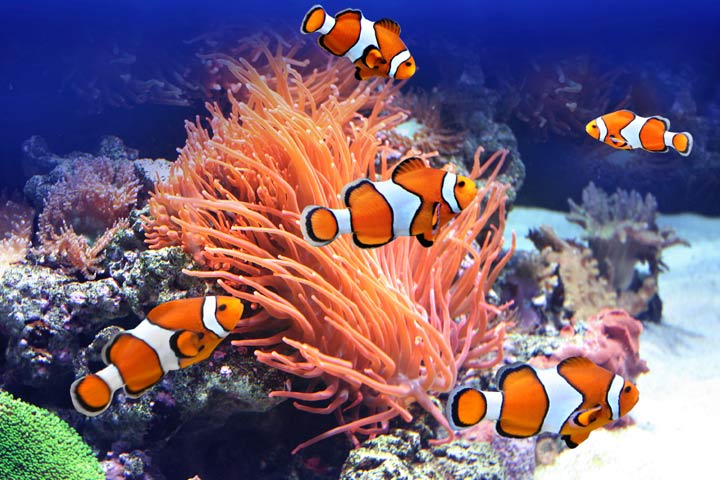
Characteristics
The Clown Fish, also known as The Anemonefish for where they make their homes in Sea Anemones. There are 28 different species of Anemonefish coming in a variety of colours such as pink, red, black and brown, and come in sizes ranging from 1”-12”.
The one we are looking at today is the False Clown fish, they have orange bodies with three white bands starting on their head that are outlined in black. They are up to 3 inches in length but can grow up to 4 inches, their tail is rounded with the dorsal fin exhibiting 11 spines.
Found in the tropical Coral reefs within the Pacific and Indian Oceans, Clown fish are omnivores that means they eat both meat and plant material, typically they enjoy algae, zooplankton, worms and various small crustaceans. Their diet however does vary completely upon the areas in which they inhabit. In the wild they reach ages of around 6 years old whereas in captivity they can live for 20+ years, with one pair at Dudley Zoo reaching the grand old age of 27.
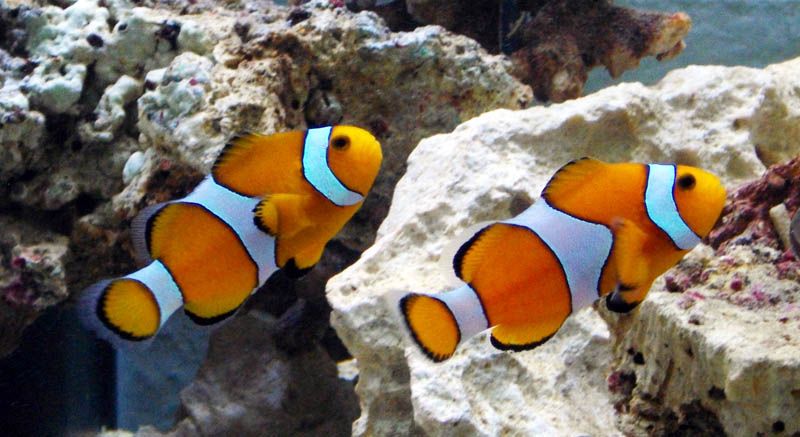
Amazing Sea Anemone Relationship
Anemones are known for delivering lethal stings to anything that touches them, however Clown fish are adapted so that they are able to live within them safely. Before they take up residence, they perform what is thought to be an elaborate dance, touching the tentacles with varied parts of their body until they acclimatise to its stings. Their specially adapted mucus that covers the scales of the fish make them immune to the anemones stings. The Anemone provides the fish with safety from predators and also food scraps, whereas the Clown fish drives off any intruders and continues to preen its host by removing parasites.
Clown fish choose to inhabit one anemone in large groups that will include the breeding male and female and a number of younger male fish. Did you know that all Clown Fish are born male? They later develop female reproductive organs when it is required. This occurs when the female of the group dies, the most dominant male will then transform and become female resulting in the next dominant male becoming the new breeding male.
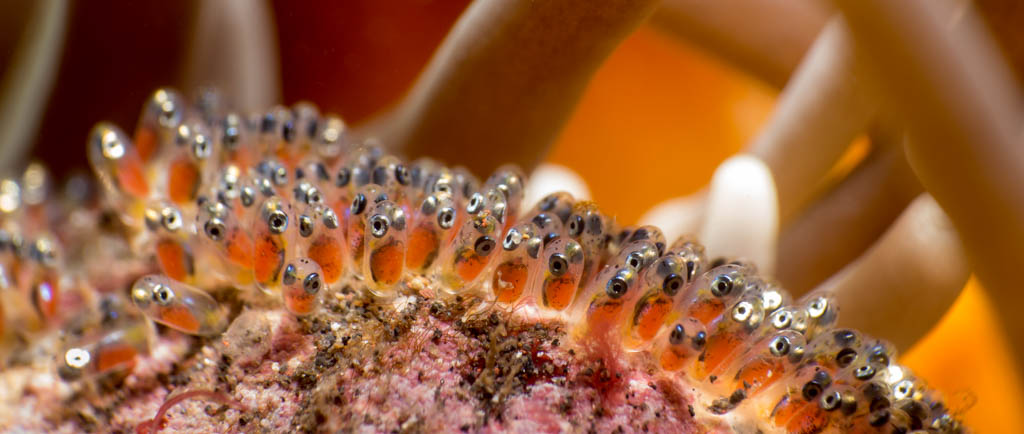
The female will lay her eggs on the flat surface of the Anemone laying up to 2000 eggs at a time and at around the same time as the full moon.
The male will then guard the eggs until they hatch just over a week later. The fry stay within the Anemone until they are much larger and venture only a few metres away from their home.To put the film Finding Nemo into context, When Nemo’s mother died, Marlon should have then become the female with Nemo then becoming his breeding male- not sure that would have made for a good family film.
The Reef at home
Due to movies just like Finding Nemo, these pretty little fish are becoming increasingly popular in the home aquarium with aquatic stores breeding more and more of these fish to meet demands. Sadly, this popularity is also this fish’s downfall as although small and cute looking they need a spacious marine fish tank, a large proportion of the general public don’t realise the amount of work that goes into keeping one and this results in the majority of Clown fish bought dying very quickly, with some even attempting to put these fish in tropical tanks.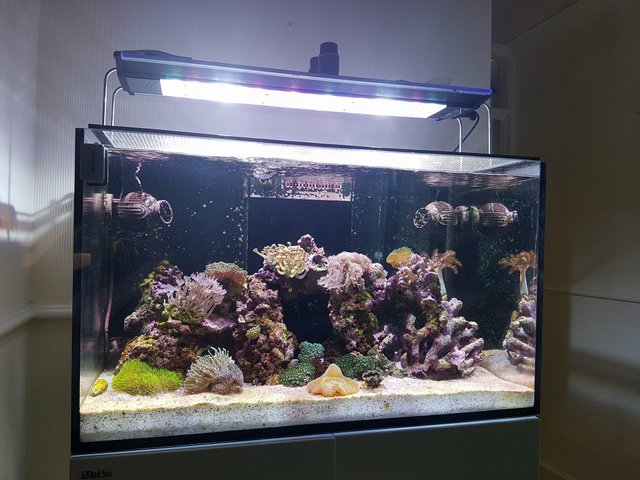
A Photo of our empty reef whilst the fish were in quaratine
In my home reef aquarium, we have two Clown fish, one of which we have had for nearly two years that we believe to be a female. She has had three male companions in total, the first male we had sadly died of an incurable disease although we tried everything to save him including buying a separate hospital tank, the second male was forced to jump by another fish when the lid was off for cleaning and the third, having had a tough time getting to know our female is now happily settled into the reef. Although easy to keep, the maintenance of the system is tough with hours upon hours of cleaning and checking parameters, not to mention the hundreds/thousands spent on equipment. It’s not for the faint hearted.
Amazing Behavioural Facts
Clown fish are an active species of fish and a wonderful addition to a reef aquarium and even more wonderful to see out in the wild. However, did you know that even though they are cute looking they are also highly aggressive/territorial, and are even violent by nature. These little fish will even attack divers should they come too close to their anemone, they have a very strong jaw that can provide a strong nip should you come to close. Just watch this shark’s reaction
Most fish communicate using their swim bladder or rubbing their bones together to vocalise with one another, whereas Clown fish raise their heads and shuffle the bones within their mouths and close their jaws. By slamming their teeth together, it produces ticking noises that can be done by all species of Clown fish, this allows them to communicate effectively when confronted by dangers such as predators or nosey neighbours. It is thought that the increased noise pollution in our Oceans is having a profound effect on the Clown fish and their ability to communicate, with researchers proving that the Fish displayed clear behavioural differences when subject to loud noises, with little to no observable communication cited.
Let me hand over to Sir David
Final Thoughts
This super amazing little fish can change its gender, has specially adapted skin that is immune from stings, is highly aggressive but also incredible to watch. Having had a number of these fish in my home reef we have become specifically attached to our female and although she nipped my other half on his hand creating a huge blood blister and bruising, they are such a fantastic addition to our tank. I absolutely love any Disney film and have specifically enjoyed Finding Nemo and its sequel, though should they have followed the official way of life of this species it would have been a terribly disturbing film.
Our home reef has now cost us in the excess of £2300 with the equipment, diseases, corals and fish we have bought and replaced over the past 3 years. It isn’t at all easy to maintain and it takes A LOT of reading and understanding to upkeep, but it’s a feature to our living space that we both fully enjoy. Out of all species of fish, Clown fish are one of my absolute favourites and deserve to feature in this Amazing Animals series.

If you enjoyed this edition of Amazing Animals you may be interested in some of my previous posts:
The Greater Bird of Paradise
The Reindeer
The Three-Toed Sloth
The Hippopotamus
The Wandering Albatross
The Polar Bear
Any many more…
Content Sources
Live Science, A-Z animals, National Geographic, Amazing Clownfish Facts, Scientific American
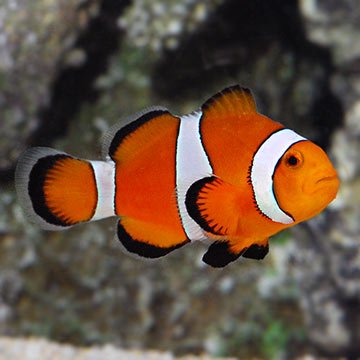

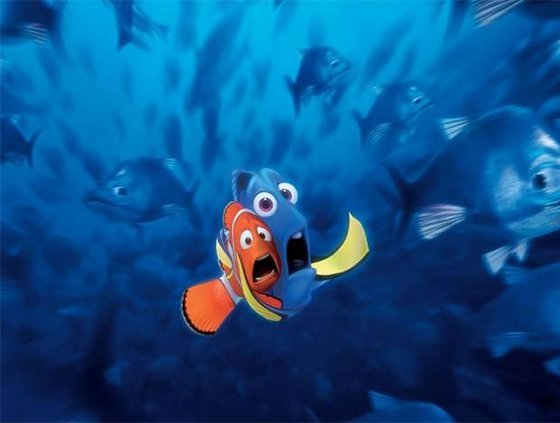

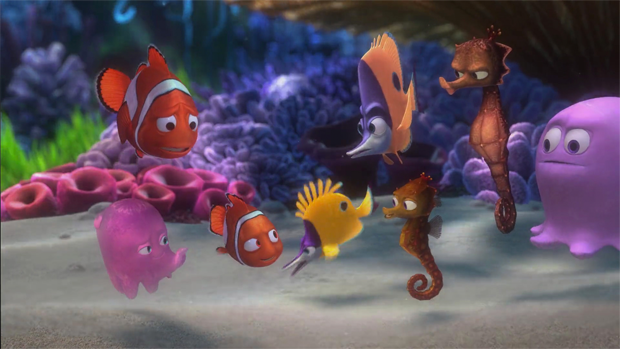
The movie "finding nemo" actually brought the clown fish into spotlight. I heard they are poisonous @amavi is that true
Disney chose the cutest fish for their film, I wish they had picked a species that is on the endangered list rather than one that is Least Concern. Nonetheless I love the film! They are not poisonous or venomous :)
Excellent write up - the description of how Finding Nemo, if it were to be realistic, should have worked is hilariously awkward... I bet someone could make an adaptation film where the guys become girls and it would probably become the best film ever
Yeah probably haha glad you enjoyed today’s animal :)
Resteemed to over 7000 followers and 100% upvoted. Thank you for using my service!
Send 0.100 Steem or 0.100 Steem Dollar and the URL in the memo to use the bot.
Read here how the bot from Berlin works. News you will find under the hashtag #resteembotnews.
Please help us grow and use our link to trade #IOTA #BTC #ETH and a lot of more. https://www.binance.com/?ref=10230705
@resteem.bot
Ooh that's amazing ! !
I love all your articles! There's so much amazing information, and I learn something new every time. Keep up the great work!
Oh thank you :) makes the research worthwhile
@originalworks
The @OriginalWorks bot has determined this post by @amavi to be original material and upvoted it!
To call @OriginalWorks, simply reply to any post with @originalworks or !originalworks in your message!
Nice post! It is amazing the kind creatures living under the water. Thanks for sharing. I follow and upvote you.
Infact the clown fish is amazing and unbelievable.This is also beautiful.
I LOVE THE WAY IN WHICH THE CONTENT SHOWS.
I was already hmm-ing when you were discussing their mating/breeding habits and then burst out laughing when you confirmed what I thought was going on and how that would impact on a certain movie XD
Reef aquariums look really hardcore :O Definitely something I'll enjoy at other people's houses or big aquariums ;D
I feel like it has been so long since I saw you around! Yeah, when you put it into context you realise how messed up a movie could actually be! I love our reef, it just eats a lot of money and time :)
Yeh sorry, I'm around, just atrocious at commenting XD Trying to remedy that :)
I would assume that was the case as reef tanks seem to be a pretty intense labour of love.